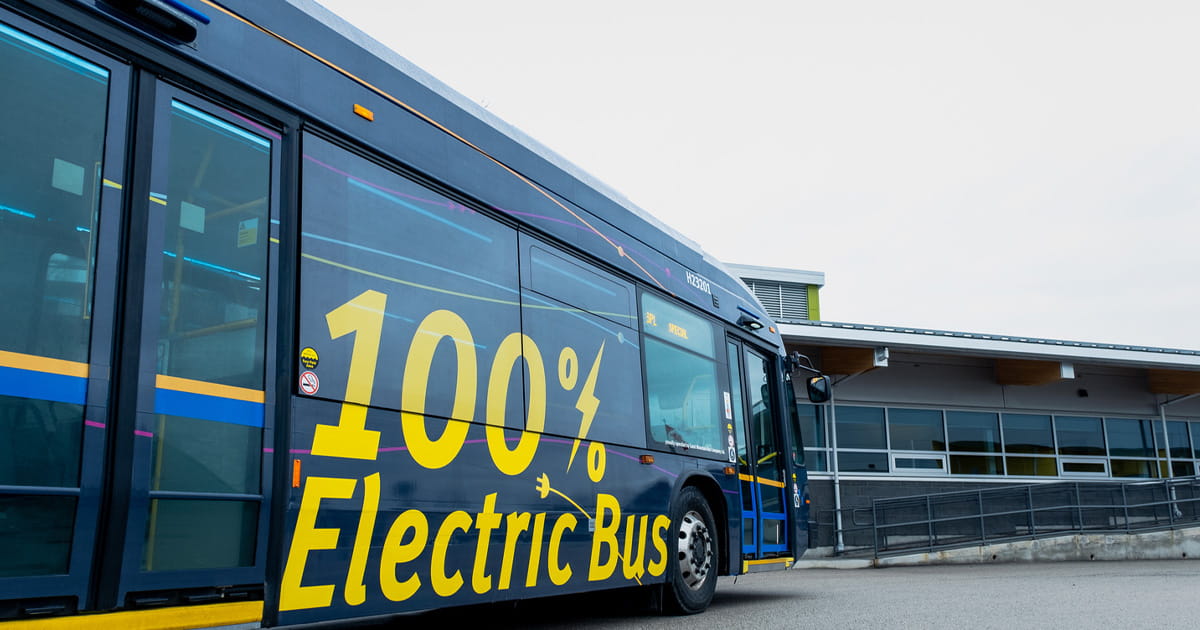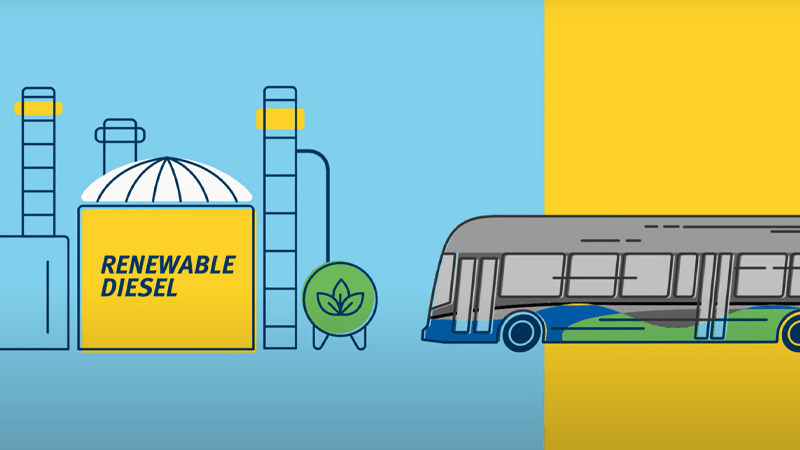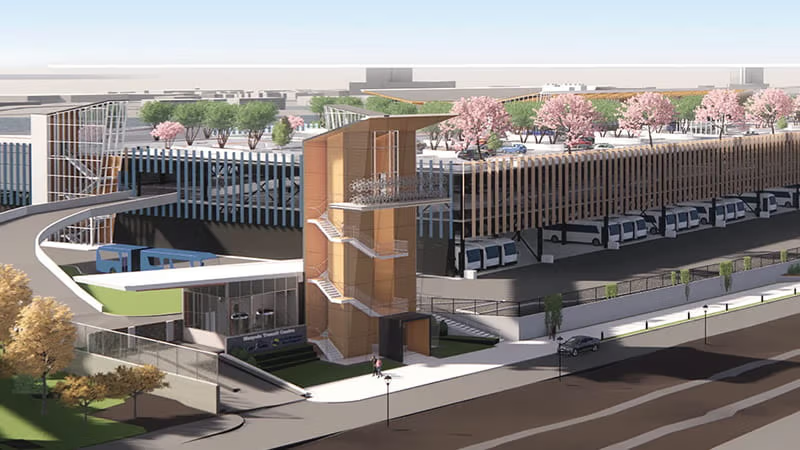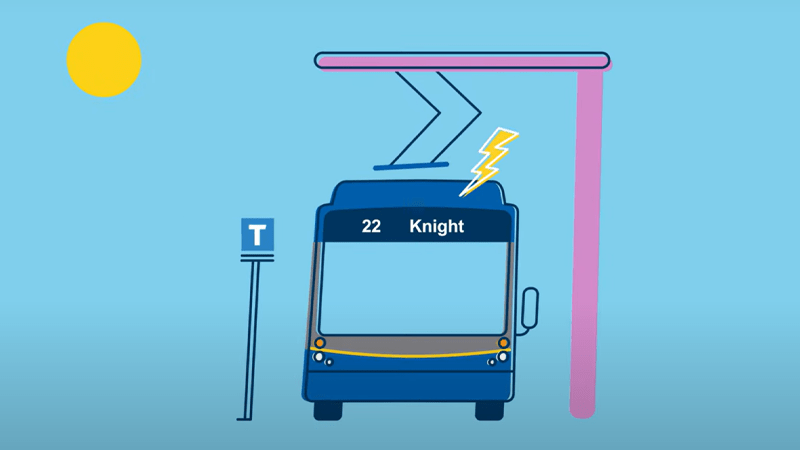By taking transit instead of driving a gas car, you can shrink your transportation emissions by 80%.
Climate Action

Metro Vancouver is at a pivotal moment. Climate impacts – such as extreme heat, flooding, and wildfire smoke – are already affecting how we move and live in the region. At the same time, responding to the climate emergency means thinking differently about transportation.
Transportation Has a Big Impact
Transportation is the biggest single source of greenhouse gas emissions (GHGs) in the region – with cars, light trucks, and SUVs responsible for 32% of all emissions.
Did You Know?
TransLink customers collectively save an estimated 500,000 tonnes of GHGs in one year by not driving a car.
For every 100 people that take SkyTrain or an electric bus, 229 kg of CO2 emissions are avoided – that's the equivalent amount of carbon stored in a cubic metre of BC softwood.
Due to the efficiency of public transit, TransLink’s fleet makes up less than 1% of regional road emissions.
How You Travel Makes a Difference
Kilograms of greenhouse gas emissions per trip.
TransLink Climate Action
To support a carbon neutral region and address the climate emergency, TransLink is taking urgent steps.
While TransLink’s fleet and facilities are responsible for less than 1% of regional GHGs (and supply around 12% of the region’s trips), we’re transforming how we operate. This includes moving towards a fully electrified transit system (zero-emissions fleet) and using low-carbon fuels to rapidly reduce carbon emissions during this transition.
Strategies and Plans
Learn how we’re taking action:
You can track our climate action progress in our annual Accountability Report. Our Low Carbon Fleet Strategy (to be superseded by the Zero Emissions Fleet Transition Plan) is our roadmap to reaching our climate targets within the bus fleet.
How TransLink is Reducing Emissions

Renewable Fuels
We’re using renewable fuels to rapidly reduce GHGs.
Our compressed natural gas bus fleet uses 100% renewable energy. We’ve also begun transitioning our diesel bus fleet to 100% renewable diesel, created from organic waste and vegetable oil.
Renewable transition fuels minimize our global impact while we work to electrify the bus fleet.

Facilities
Transit stations, hubs, and maintenance centres are a big part our operations.
We’re updating our facilities design guidelines and building our first all-electric transit centre in Marpole in Vancouver, which will house over 300 battery-electric buses.

Zero-Emissions Transition
Thanks to our SkyTrain network and 280 trolley- and battery-electric bus fleet, 65% of our passenger kilometres are already zero emissions. Future electrification milestones include:
-
2024: Route 100 fully electrified
-
2025: 57 more battery- electric buses added
-
2030: 460 battery-electric buses in service
Regional Transportation Climate Action

TransLink is Metro Vancouver’s integrated, multimodal transportation authority. Beyond transit, we’re responsible for planning, managing, and funding regional transportation across all modes: walking, biking, rolling, transit, and driving.
Transport 2050 is the regional transportation strategy, setting the direction for the next 30 years, across all modes. Through Transport 2050 (and in alignment with the Metro Vancouver Clean Air Plan and Climate 2050), the region has set two bold transportation climate targets:
-
2030 – Reduce light-duty vehicle (car, light truck, SUV) GHGs 65% from 2010 levels
-
2050 – Eliminate carbon emissions from transportation altogether
Beyond increasing the supply of sustainable modes (walking, biking, rolling, and transit), Transport 2050 identifies four strategies and 15 actions to support regional transportation climate action, including:
-
5.1: Reduce the energy requirements of the transport system.
-
5.2: Transition to zero-emissions vehicles
-
5.3: Support ready access to low-carbon fuels for the transportation system.
-
5.4: Account for and reduce upstream and downstream emissions in the transportation system
The Access for Everyone plan aims to deliver the first decade of improvements identified in Transport 2050, and progress on these targets.
TransLink Plays an Important Role in Ensuring Regional Climate Resilience
The Metro Vancouver region is facing extreme weather and climate impacts. We know our facilities, operations, employees, and travellers can be affected by intense flooding, heatwaves and wildfire smoke.
These trends will increasingly have an impact on the regional transit and transportation system.
![]()
Heat days (# of days above 30°C): +12 days per year
![]()
Annual rainfall to increase by 5%
![]()
Sea levels will rise half a metre by 2050
![]()
More extreme wind and ice storms
![]()
Increased flood risk along the Fraser River, shorelines, and coastal communities
We’re taking steps to ensure that the regional transit and transportation system is resilient to intensifying climate and extreme weather impacts by:
-
Ensuring that all buses have air conditioning by 2029
-
Expanding our tree canopy program
-
Updating building design guidelines to better prepare for climate impacts
-
Developing a climate resiliency and adaptation framework
-
Working with regional, provincial, federal, and Indigenous Nation partners
-
Protecting key infrastructure against floods and other climate change impacts.
Further climate resilience actions and investments will be identified in subsequent TransLink investment plans.
For more information on climate impacts, see the Metro Vancouver Regional Climate Projections and Adaptation, Government of BC Climate Preparedness and Adaptation Strategy, Pacific Climate Impacts Consortium, and Resilience Pathways Report.

